10 Tips for Winterizing your Motorcycle
Winter can be a long season – it seems to arrive so quickly and last too long for some of us. Properly winterizing your motorcycle, then taking a few minutes each month to check it, will save time and money in the spring and get you on the road safely that much quicker.
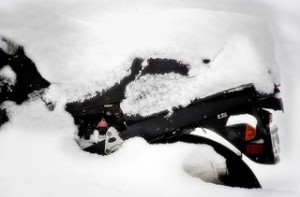 In all cases, check your owner’s manual for the manufacturer’s recommendations for proper winter storage. If you don’t have one, get one – they’re invaluable. You’ll be amazed at what you can do yourself.
In all cases, check your owner’s manual for the manufacturer’s recommendations for proper winter storage. If you don’t have one, get one – they’re invaluable. You’ll be amazed at what you can do yourself.
10 Tips for Winterizing your Motorcycle
- Read your owner’s manual. If you don’t have one, check with your local retailer, online forums – or Google.
- Clean your motorcycle. Bugs can be corrosive. Wash it well with an automotive soap, wax it, polish chrome, and make sure it’s dry before covering it.
- Fill your gas tank completely to prevent condensation and add a manufacturer recommended fuel stabilizer. If your bike is carbureted, your owners manual will likely advise you to drain the carbs – you can do this by running the engine with the fuel tap in the “off” position until you effectively run out of gas.

- Change your engine oil and oil filter. While less of a problem than it used to be, oil can have contaminants in it that can damage your engine if left for extended periods. Besides, if it’s done in the winter, you ready to go in spring! Read: 21 Simple Steps to Change Your Oil.
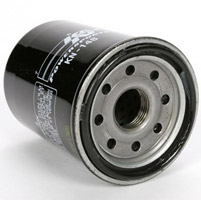
- Lubricate bolts, cables – any parts that are prone to rust. If you have a mechanical clutch cable, use a gizmo like this cable luber. Clean your chain (if you have one) well and make sure it’s well lubricated. Kerosene makes an excellent cleaner. Do NOT use a degreaser like WD-40. It can damage the O-rings.
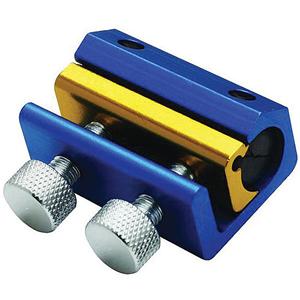
- Put your bike on its center stand. If it doesn’t have one, consider investing in a lift like the Pitbull below, or even carefully propping up the bike using blocks. This takes the pressure off the suspension and tires.
- Elevate both wheels off the ground. If you’re unable to do this, the next best thing is to move your bike around every couple of weeks so tires aren’t sitting on the same spot for extended periods and developing flat spots. Tires tend to lose air pressure when it’s cold so inflate them to the maximum recommended pressure to maintain their shape.
- Keep your battery charged. Caring for it will save needless grief–and cost–in the spring. Using a trickle charger keeps it fully charged while allowing you to leave the battery in the bike. Just clean the battery leads, attach the connections and plug in the charger. Another option is to remove the battery and place it on a charger. Battery Tender makes an excellent trickle charger. I’ve seen others with disappointing performance.
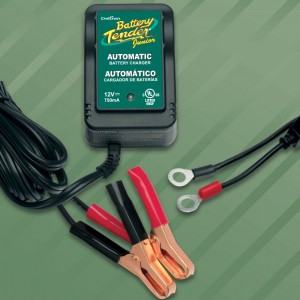
- Block air intake and exhaust pipes with plastic bags, steel wool, duct tape – anything to keep the critters out. I know this from personal experience when one spring I discovered my air filter was full of sunflower seeds. Evidently it had been used as a dining room.

Now go inside and start planning next season’s rides!
photo credit: McBeth via photo pin cc

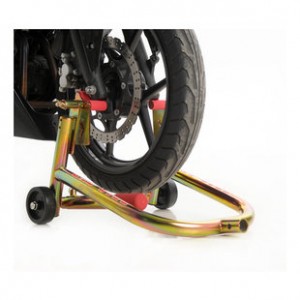
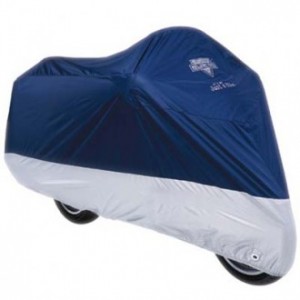
Liz you always have the best advice, be it motorcycles, riding or about life.
Many thanks.
Thank you Mary! You’re the best!
Liz
Great ideas! Some I knew, but never thought about blocking the air intake. I do get mice that move in the garage for winter.
I loved your book, also! I underlined almost the whole thing!
Hi Danette – I didn’t think about the air intake either until I discovered the mice were using my air filter for a dining room! Glad you enjoyed the book.
Liz
The boyz at the shop taught me to run the bike with the fuel tap in the off position until it stalls to use up all the fuel in the fuel lines. Draining the carburetor is a separate task. This is done by opening the little screw above at the top of the carburator to allow the small amount of gas (approx. 1/16 cup) to drain out one of the tubes under the bike. If this gas is not removed it will sit in the bottom of the carburetor and can gum up creating problems with starting the bike in the spring.
I simply love all the good and useful information on motorcycling you bring to one location. Thank you. Wishing you continued strength in your recovery.
Thanks Chris. I used the same method to use up the fuel. I was of the understanding that it also uses up the fuel in the carbs. My logic: fuel has to go through carbs to get to engine, if there’s still fuel in the carbs, the engine won’t stall. Will check it out.
Appreciate hearing that you’re finding the info useful. And thanks for the kind words of encouragement. It’s coming!
Best to you.